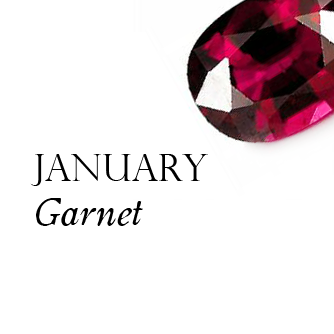Amethyst // Birthstone for February
 If gazing into the sparkling purple depths of an Amethyst suffuses you with a sense of powerful well being, this is only to be expected. The ancient Greeks believed that this gemstone held many powers, among them protection against intoxication. In fact, the word Amethyst comes from the Greek word “amethystos,” meaning sober. In ancient Greece, the gemstone was associated with the god of wine, and it was common practice to serve this beverage from Amethyst goblets in the belief that this would prevent overindulgence. Even today, Amethyst is considered a stabilizing force for those struggling to overcome addictive behaviors.
If gazing into the sparkling purple depths of an Amethyst suffuses you with a sense of powerful well being, this is only to be expected. The ancient Greeks believed that this gemstone held many powers, among them protection against intoxication. In fact, the word Amethyst comes from the Greek word “amethystos,” meaning sober. In ancient Greece, the gemstone was associated with the god of wine, and it was common practice to serve this beverage from Amethyst goblets in the belief that this would prevent overindulgence. Even today, Amethyst is considered a stabilizing force for those struggling to overcome addictive behaviors.
February’s purple birthstone has been found among the possessions of royalty throughout the ages. The intense violet hue of Amethyst appealed to early monarchs, perhaps because they often wore this color. Purple dye was scarce and expensive at one time, and so it was reserved for the garments of kings and queens. Amethyst has been found in ruins dating as far back as the ninth century, adorning crowns, scepters, jewelry, and breastplates worn into battle. A large Amethyst is among the closely guarded gemstones in the British Crown Jewels.
Amethyst is also symbolic of spirituality and piety. It has been used to ornament churches and crosses used in religious ceremony, and worn in rings and on rosaries by bishops and priests.
Once considered more valuable than diamonds, Amethyst is a member of the quartz family, occurring naturally as crystals within rocks. Deposits of this gemstone are found in Brazil, Canada, Australia, India, Madagascar, Namibia, Russia, Sri Lanka; and in the United States.
The gift of Amethyst is symbolic of protection and the power to overcome difficulty. It is said to strengthen the bond in a love relationship, so it is an ideal anniversary or engagement gem. Whether or not Amethyst holds such power, it’s stunning beauty will certainly make anyone who wears it feel like royalty!
content by about-birthstones.com






